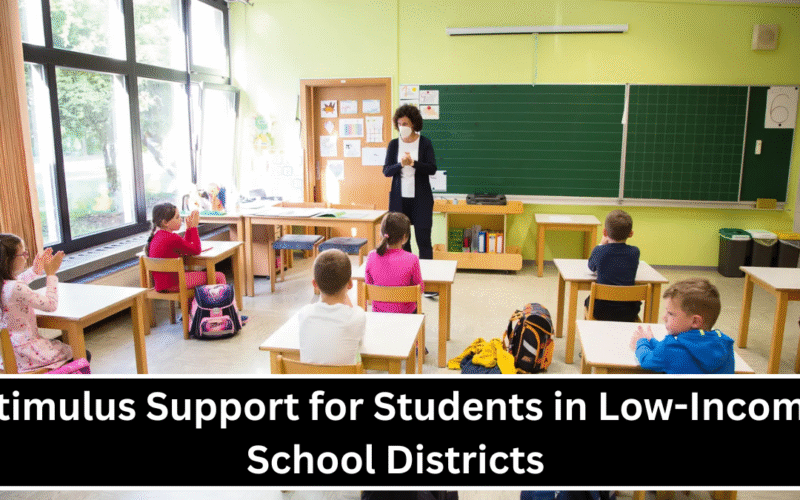Many students across the country attend schools in low-income districts where basic resources like textbooks, computers, or even proper lunch programs are often lacking. These students face extra challenges because their schools have less funding, which affects the quality of their education. To help with this, the government has introduced stimulus support programs. These programs are designed to provide extra money and resources to schools that need it most. The goal is to give all students—no matter where they live or how much money their families make—a fair and equal chance to succeed in school.
Stimulus Support – A Lifeline for Underserved Schools
Stimulus support refers to financial help provided by the government, especially during times of crisis such as the COVID-19 pandemic. One well-known example is the Elementary and Secondary School Emergency Relief (ESSER) Fund. This fund was created as part of a federal stimulus package to help public schools recover from pandemic-related challenges. Schools in low-income districts used this money to purchase laptops for online learning, provide internet access to families, improve air ventilation in classrooms, and offer extra academic support. Without this funding, many students would have fallen behind in their studies or missed out on school entirely during remote learning periods.
In addition to academic tools, stimulus money has helped schools hire mental health counselors, social workers, and tutors. These professionals help students deal with emotional stress, focus better in class, and catch up in subjects where they may have fallen behind.
Stimulus support is not just about money—it’s about giving students in struggling school districts the tools and support they need to thrive. Whether it’s a laptop for online classes, a safe classroom to learn in, or a counselor to talk to, every bit of help can change a student’s future. As governments continue to invest in education, it’s important that this support reaches those who need it the most. By focusing on low-income school districts, stimulus programs can create a stronger, fairer education system for all.
FAQ’s:
Q1. What is stimulus support in education?
A1. Stimulus support in education is government funding given to schools, especially in times of crisis, to help improve resources and learning conditions for students.
Q2. Why do low-income school districts need extra support?
A2. These districts often lack enough money for basic supplies, good teachers, and technology, which can make learning harder for students. Extra support helps bridge this gap.
Q3. How was stimulus money used during the pandemic?
A3. It was used for online learning tools like laptops and Wi-Fi, classroom safety upgrades, tutoring, mental health support, and teacher training.
Q4. Does stimulus support improve student performance?
A4. Yes, when students have better tools and support, they can focus more on learning, stay in school longer, and perform better in exams.
Q5. Will stimulus support continue in the future?
A5. It depends on government policies and budgets. Many educators are asking for long-term funding to ensure lasting improvements in low-income school districts.
